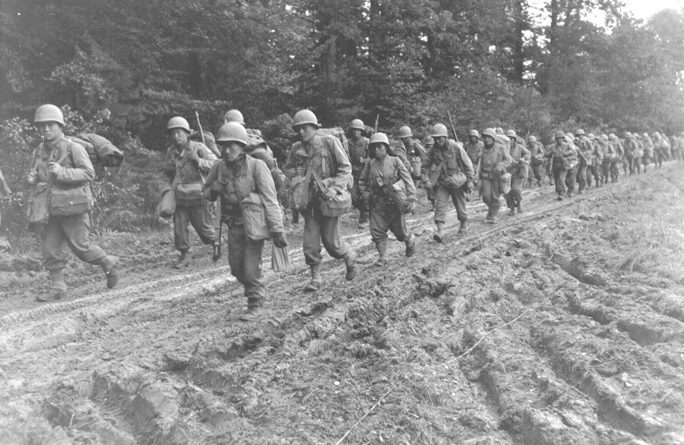The Vanished Battalion of Sandringhams – Unexplained Mysteries
The Vanished Battalion or the Lost Sandringhams were a group of soldiers that became lost during the Dardanelles Campaign of World War I. Whether or not they simply vanished, is a matter of debate. A certain mystique has developed around the loss of these soldiers for a few reasons. Some claims have been made that their loss had something to do with a supernatural occurrence. There is also the fact that a loss of such a large group of soldiers with no survivors is exceedingly rare, if not unheard of. However, there is the question of whether they were lost at all, or if thier bodies were simply never identified properly.
Most of the members of the Vanished Battalion came from the Sandringham Company of the Norfolk Regiment, which later became known as the Royal Norfolk Regiment. The Sandringhams were thus named because they had all come from the staff of the royal Sandringham Estate. The King had ordered that a company of military men be formed of his staff there, in 1908. This was done and the Sandringham Company was sent to war in 1915.
In August of 1915, the Sandringhams and the other members of the Vanished Battalion arrived in Sulva on the Gallipoli Peninsula in Turkey. They were under the command of Colonel Horace Proctor-Beauchamp. They saw action, for the first time, on August 11, 1915. The Allies were attempting to advance on Turkish positions on the peninsula and the Vanished Battalion were part of the struggle for advancement. The fighting was intense and the Allies were taking heavy losses.
The following day, August 12, enemy fire was heavy when the Vanished Battalion was ordered to advance. They fought through the heavy smoke, machine gun fire and sniper fire with their comrades. As they advanced, Colonel Beauchamp directed a group of men (including the Sandringham Company) into a wooded area. Some witnesses say that they simply marched through the heavy smoke, into the woods and were never seen again. Four witnesses said (much later) that the men had walked into a formation of ground-level clouds and had vanished right before their eyes.
It is important to note here that the number of men lost was not, in fact, a full battalion. It was rather close, but the moniker is a misnomer. There were 250 men and 16 officers in the group.
It was later discovered that these men were not taken as prisoners by the Turkish and their bodies were never officially found. However, some time after the battle, more than 100 bodies were found near where the Vanished Battalion had last been seen. They were the bodies of soldiers that had been executed with single gunshot wounds on their heads. These men could certainly have been some of the members of the Vanished Battalion. Of course, there are many people who believe the cloud story and think that God or aliens intervened that day in 1915.
The men of E Company had grown up together, playing cricket for the same village team, chasing the same girls and drinking in the same pubs and inns. And now, as members of the 5th Territorial Battalion the Royal Norfolk Regiment, they were about to go to war together.
It was the hot August of 1914 and groups of friends or buddies across Britain, team-mates and work colleagues eagerly enlisted to fight the Bosch. But what the soldiers of E Company had in common was something rather unusual: they all belonged to the staff of the Royal Estate at Sandringham. The company had been formed in 1908 at the personal request of their employer, King Edward VII. He asked Frank Beck, his land agent to undertake the task. This he did, recruiting more than 100 part-time soldiers or territorials.
As was the custom in the territorial battalions of the day, military rank was dictated by social class. Members of the local gentry like Frank Beck and his two nephews became the officers. The estate’s foremen, butlers, head gamekeepers and head gardeners were the NCOs. The farm labourers, grooms and household servants made up the rank and file.
What happened to the Sandringhams during the disastrous Dardanelles campaign in the middle of their very first battle, on the afternoon of August 12, 1915? One minute the men, led by their commanding officer, Sir Horace Proctor-Beauchamp, were charging bravely against the Turkish enemy. The next they had disappeared. Their bodies were never found. There were no survivors. They did not turn up as prisoners of war.
They simply vanished.
General Sir Ian Hamilton, the British Commander-in-Chief in Gallipoli, appeared as puzzled as everyone else. He reported ‘there happened a very mysterious thing’. Explaining that during the attack, the Norfolks had drawn somewhat ahead of the rest of the British line. He went on ‘The fighting grew hotter, and the ground became more wooded and broken.’ But Colonel Beauchamp with 16 officers and 250 men, ‘still kept pushing on, driving the enemy before him.’
King George V at the Front’Among these ardent souls was part of a fine company enlisted from the King’s Sandringham estates. Nothing more was ever seen or heard of any of them. They charged into the forest and were lost to sight and sound. Not one of them ever came back.’ Their families had nothing to go on but rumours and a vague official telegram stating that their loved ones had been ‘reported missing’.
King George V could gain no further information other than that the Sandringhams had conducted themselves with ‘ardour and dash’.
Queen Alexandra made inquiries via the American ambassador in Constantinople to discover whether any of the missing men might be in Turkish prisoner-of-war camps. Grieving families contacted the Red Cross and placed messages in the papers, hoping for news of their sons and husbands from returning comrades. But all to no avail.
So what really happened to men of Sandringham?



